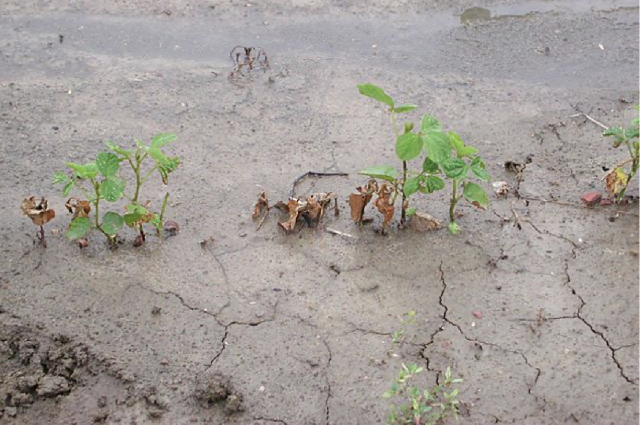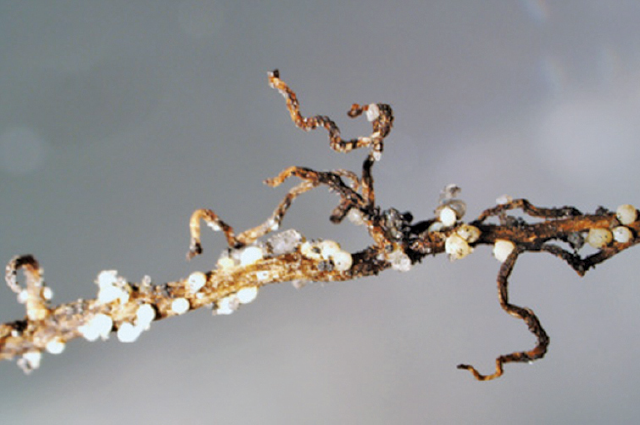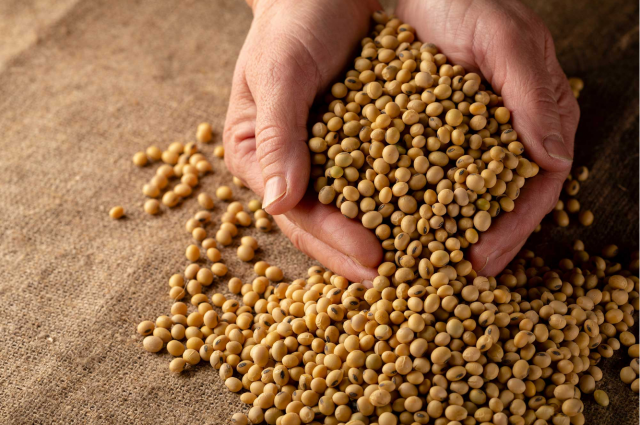Fighting Phytophthora in Soybeans.
Mark Menke Dyna-Gro Agronomist
Phytophthora root and stem rot is a common disease in soybeans. It is caused by a fungal pathogen, Phytophthora sojae (P. sojae), which is prevalent in poorly drained soils with high clay content, Ohio and eastern Indiana are known for such soils. Damage can occur early in the season in the form of seed rot and damping off, or later in the season as a root and stem rot.
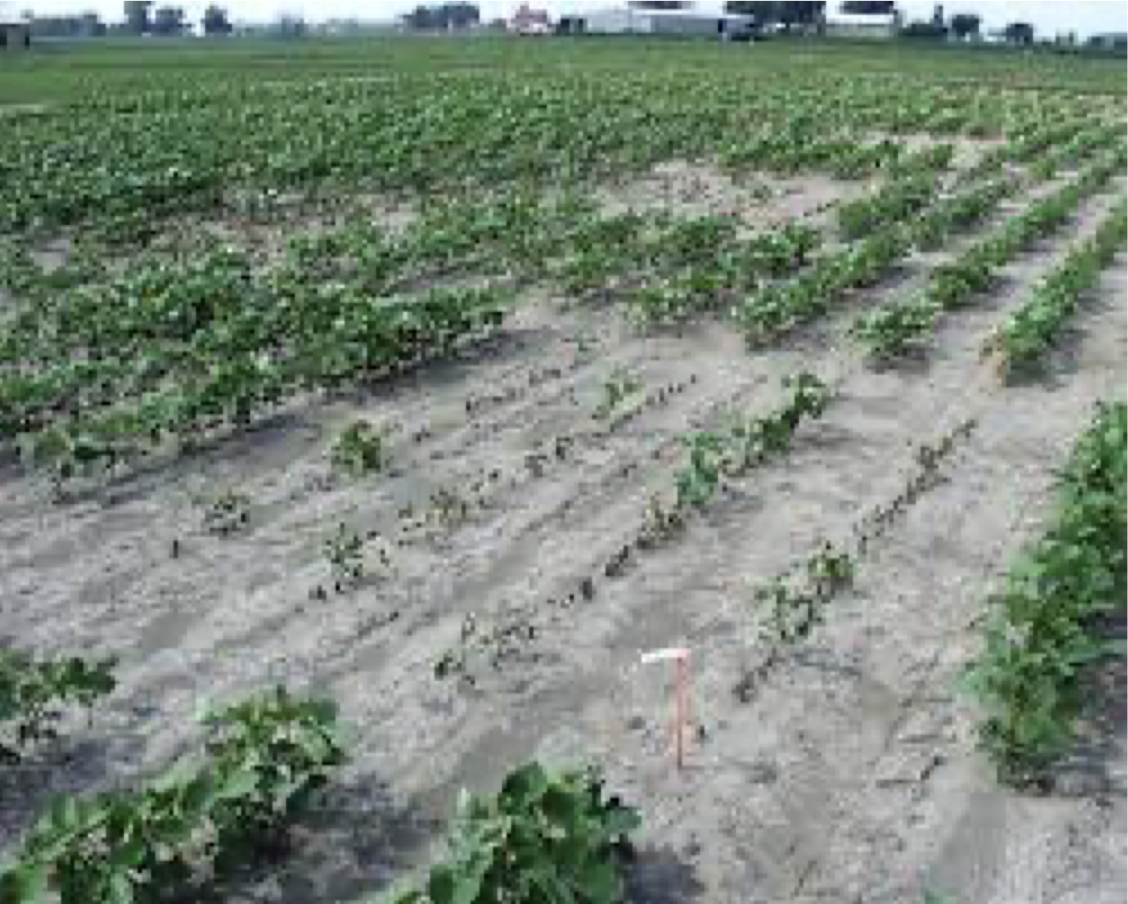
Seed decay and pre and post emergence damping off are likely to occur under warm, moist conditions (77-86 degrees F). A light brown soft rot may occur on roots or the hypocotyl as the seedling emerges from the soil. The seedlings may then die, replanting may be necessary if stands are reduced significantly.
The root and stem rot phase occurs during vegetative and reproductive stages of soybeans. The severity is dependent on level of host resistance. Soybean varieties with a higher level of resistance will have light brown roots and stunting. Soybean varieties with a low level of resistance will have colonization start in the roots, which will turn chocolate brown, then the plant leaves will turn yellow, and the whole plant will turn a reddish- orange, to orange-brown color. The yellowed- wilted leaves will cling to the plant as it dies. In highly susceptible varieties nearly whole field stand losses can occur.

The oospores of P. sojae are capable of surviving long periods of time so crop rotation and tillage are not effective management strategies.
Effective management strategies are:
Improve soil drainage: The longer a field is saturated, the worse the damage.
Use effective seed treatments for the pre and post emergence damping off phase: mefenoxam and metalaxyl are effective seed treatment to protect against seed rot and damping off. Use higher rates for improved efficacy. Dyna- Shield premium seed treatments containing these active ingredients are effective.
Host Resistance: Choosing a soybean variety with Phytophthora resistance is the only sound strategy for protection against the root and stem rot phase of the disease. Resistance is conferred though either a single gene(Rps1k, Rps1C, etc.) or through field tolerance( a multiple gene resistance measured by observing soybeans varieties tolerance levels in field conditions. Choosing a variety with superior field tolerance will produce better results in the eastern corn belt where we have a diverse population of P. sojae. than relying on Rps gene resistance. Rps gene resistance is specific to only certain races of P. sojae. Attached is a chart with Dyna-Gro soybeans and their gene resistance and field tolerance to phytophthora. Phytophthora field tolerance is measures on a scale of 1 to 10, 10 being best, 1 worst. You will note most Dyna-Gro varieties sold in the eastern corn belt have a 7 or better rating. For varieties with less than a 7 rating, keep on better drained, and lighter soils.
For heavy clay soils and those with poor drainage using a fungicide seed treatment and planting a soybean variety with a good Phytophthora field tolerance rating is critical to obtaining good soybean stands and yields!
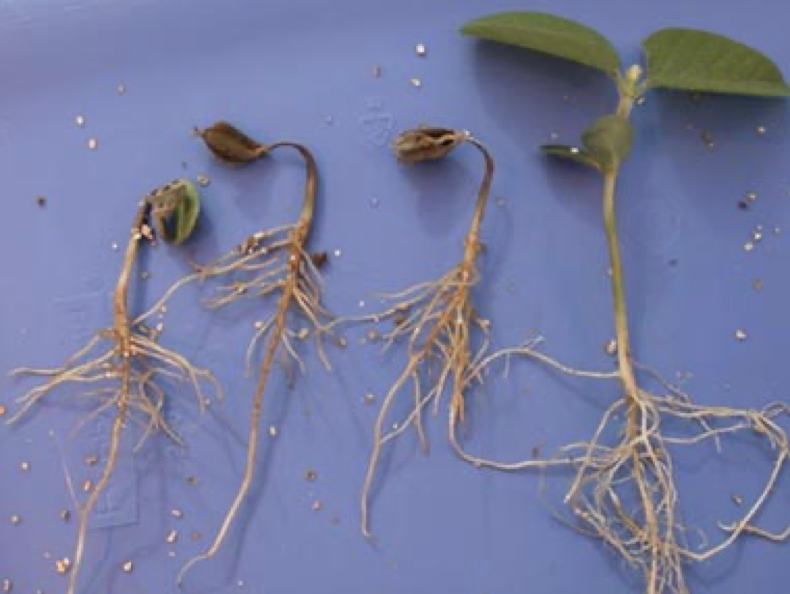
| Variety | Field Tolerance | Gene |
| S29RY05 | 8 | Rps1k |
| S31RY93 | 7 | Rps1c |
37RY33 | 7 | Rps1c |
| S35RY83 | 7 | Rps1c |
| 34RY36 | 7 | Rps1c |
| S36RY24 | 7 | Rps1c |
| S38RY84 | 6 | None |
| S39RY65 | 7 | None |
| S40RY25 | 7 | Rps1c |
| S42RS03 | 8 | Rps1a |
| S27LL553 | 7 | Rps1k |
| 3290 | 7 | None |
| S31LL43 | 7 | Rps1k |
| S3305N | 7 | Rps1k |
| S35LS15 | 7 | Rps1k |
| S3805N | 7 | Rps1c |
| S38LL54 | 7 | Rps1c |
| S40LL35 | 7 | Rps1c |
| 3410SCN | 8 | HRps1c |
Dyna-Gro RR2 soybean varieties and their gene resistance and field tolerance to Phytophthora sojae. Dyna-Gro conventional and LL soybean varieties and their gene resistance and field tolerance to Phytophthora sojae
References:
- Phytophthora root and stem rot of soybean. Dorrance, A.E., D. Mills, A.E. Robertson, M.A. Draper, L. Giesler, and A.Tenuta, 2007. Phytophthora root and stem rot of soybean. The Plant Health Instructor. DOI: 10.1094/PHI-I-2007-0830-07 Reviewed 2012.
- Ohio C.O.R.N. newsletter. Feb 10 2015, Dorrance, A.E.
- Dyna-Gro tech sheets 2015. Schonauer, Michael
- Seed and Seedling Diseases of Soybean Caused by Phytophthora and Pythium in Illinois. Malvick, Dean. June 12 2003. the Bulletin, U. of Illinois Extension.
©Copyright 2015. This information may have been accumulated from publicly available sources outside of Dyna-Gro Seed, or its affiliates. Individual results may vary, and performance may vary from location to location and from year to year. This result may not be an indicator of results you may obtain as local growing, soil and weather conditions may vary. Dyna-Gro® is a registered trademark of Loveland Products, Inc. Featured logos are service/trademarks of their respective owners.
